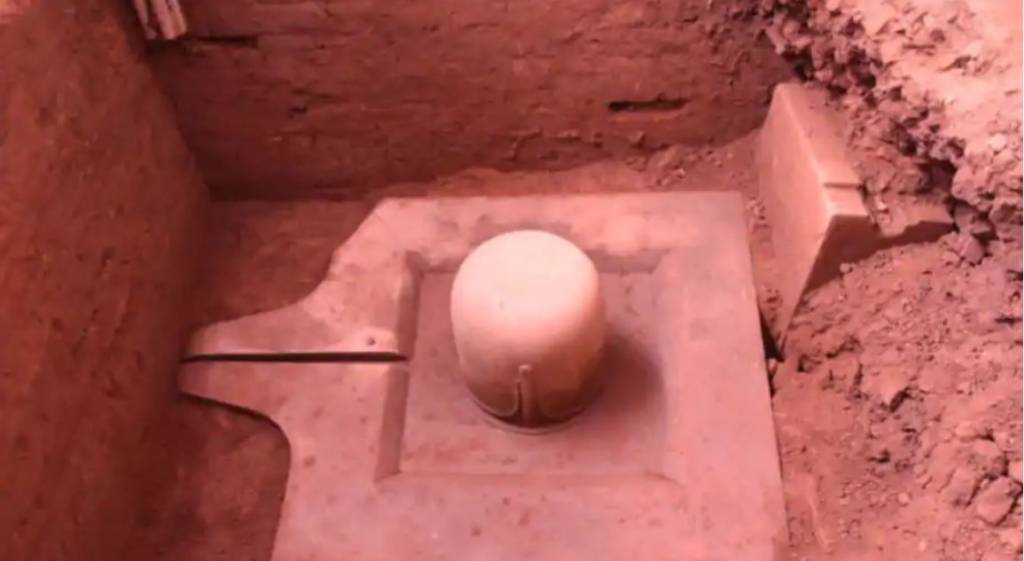In the last few years, the Indian government has accelerated the work for the restoration of dilapidated temples and pagodas across the globe in order to project its soft power.
Development Partnership Administration (DPA), an agency formed in 2013 to monitor overseas development assistance has got a new department called DPA IV in January 2020 to look after heritage restoration projects in the countries that have historical and cultural relations with India.
DPA IV has emerged as a nodal agency to carry out the restoration of temples and pagodas in Mainland Southeast Asian countries and South Asian countries. The newly created department aims to revive and display India’s cultural and heritage links with other countries and civilizations of the world, with Southeast Asia being a major focus.
In Myanmar, Laos, Vietnam and Cambodia, many projects are going on simultaneously under the close watch of DPA IV. During the restoration of temples and pagodas, many discoveries about India’s centuries-old cultural, commercial and political linkages with the countries in Southeast Asia were revealed.
A few months ago, the Archaeological Survey of India unearthed an 1100-year-old (approximately) sandstone Shiv Ling in Vietnam. The discovery of the monolithic Shiv Ling has come in the backdrop of India undertaking tremendous conservation and restoration works in the Cham Temple complex in Mỹ Sơn city- where partially ruined Hindu temples are found in abundance. The site is located in Quảng Nam province of central Vietnam.
Informing the world about the discovery, MEA Dr S Jaishankar took to Twitter and said the artifact reaffirmed the strong-civilizational connect between ancient India and Vietnam.
ASI has, in the past, helped restore the Ananda Temple in Bagan, which is a Buddhist temple in Myanmar. ASI is currently working on restoration and conservation of the Ta Prohm temple, commonly known as the Tree Temple. It is a significant 12th-century monastic Buddhist temple complex located in the Angkor World Heritage Site. The temple was featured in the movie Lara Croft: Tomb Raider and since then shot to its popularity. As of now, it is the second most popular tourist site in Cambodia after the Angkor Wat Temple.
In Laos, restoration of Vat Phou Shiva temple in Lao is being carried out. Vat Phou Shiva is the Bhagwan Shiva temple dating back to 5th and 6th century AD and predates the famous Angkor Wat. The water from the spring behind the temple is considered to be sacred. The second phase of the project began in November 2018 and shall continue until 2028.
Reaffirming a civilisational connect.
Monolithic sandstone Shiv Linga of 9th c CE is latest find in ongoing conservation project. Applaud @ASIGoI team for their work at Cham Temple Complex, My Son, #Vietnam. Warmly recall my visit there in 2011. pic.twitter.com/7FHDB6NAxz
— Dr. S. Jaishankar (Modi Ka Parivar) (@DrSJaishankar) May 27, 2020
In Sir Lanka, Nepal and Bhutan, many projects have already been completed while many are ongoing. In Nepal, the Indian government has some ongoing project in almost every district.
Indonesia, Malaysia, Maldives, Vietnam, Philippines, Cambodia, Thailand, Nepal, Bhutan, and Sri Lanka and other nations have had an unprecedented impact of Hinduism, whether pure Shaivite in nature or a conglomeration of fundamental Hindu thoughts with the pagan culture of the regions.
The cultural footprints of Hindu civilization are overtly visible to this very day in Indonesia, Maldives, Malaysia and other Southeast Asian countries. Hinduism is said to have reached Indonesia as early as the 1st century CE, following which the masses were adherents to the Hindu thought, until the arrival of Islam in the 15-16th century CE, which then overtook as the majority religion.
Notably, the National Indonesian Bureau of Statistics admitted in 1999 that around 100,000 people had officially converted or ‘reconverted’ from Islam to Hinduism over the previous two decades.
The countries around the world use their cultural, linguistic and economic commonalities to project soft power and increase cooperation. Countries like France, Spain and Portugal enjoy significant soft power by projecting linguistic and cultural similarities to many countries around the world.
Hinduism and Buddhism- two of the world’s largest religions with the third and fourth-largest numbers of followers in the world- originated from India. The whole of South Asia, Central Asia, East Asia, and Southeast Asia, has been greatly influenced by Hinduism and Buddhism. But, so far the Indian government has not capitalized on the vast cultural ties to project the country’s soft power, not until the Modi government came to power.
